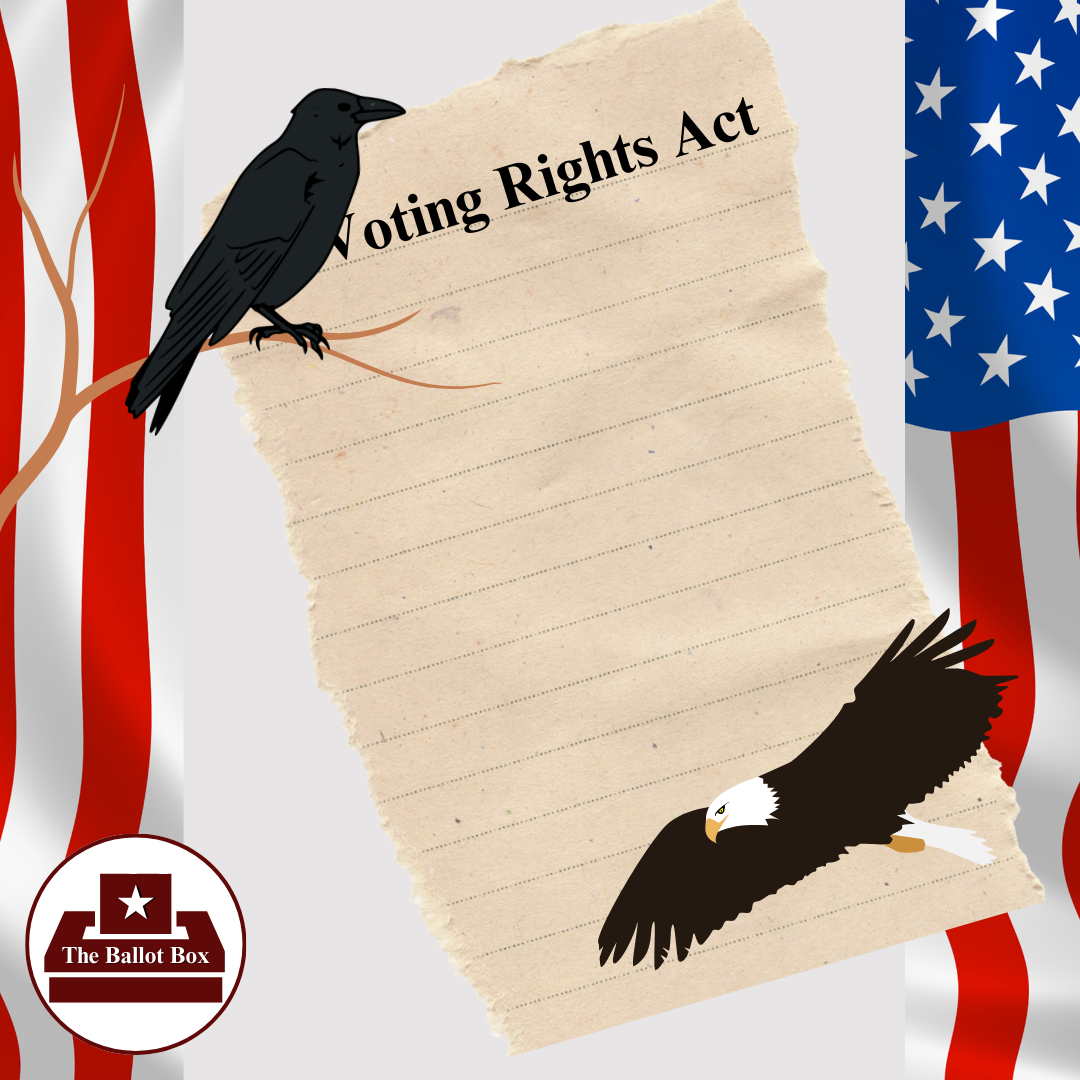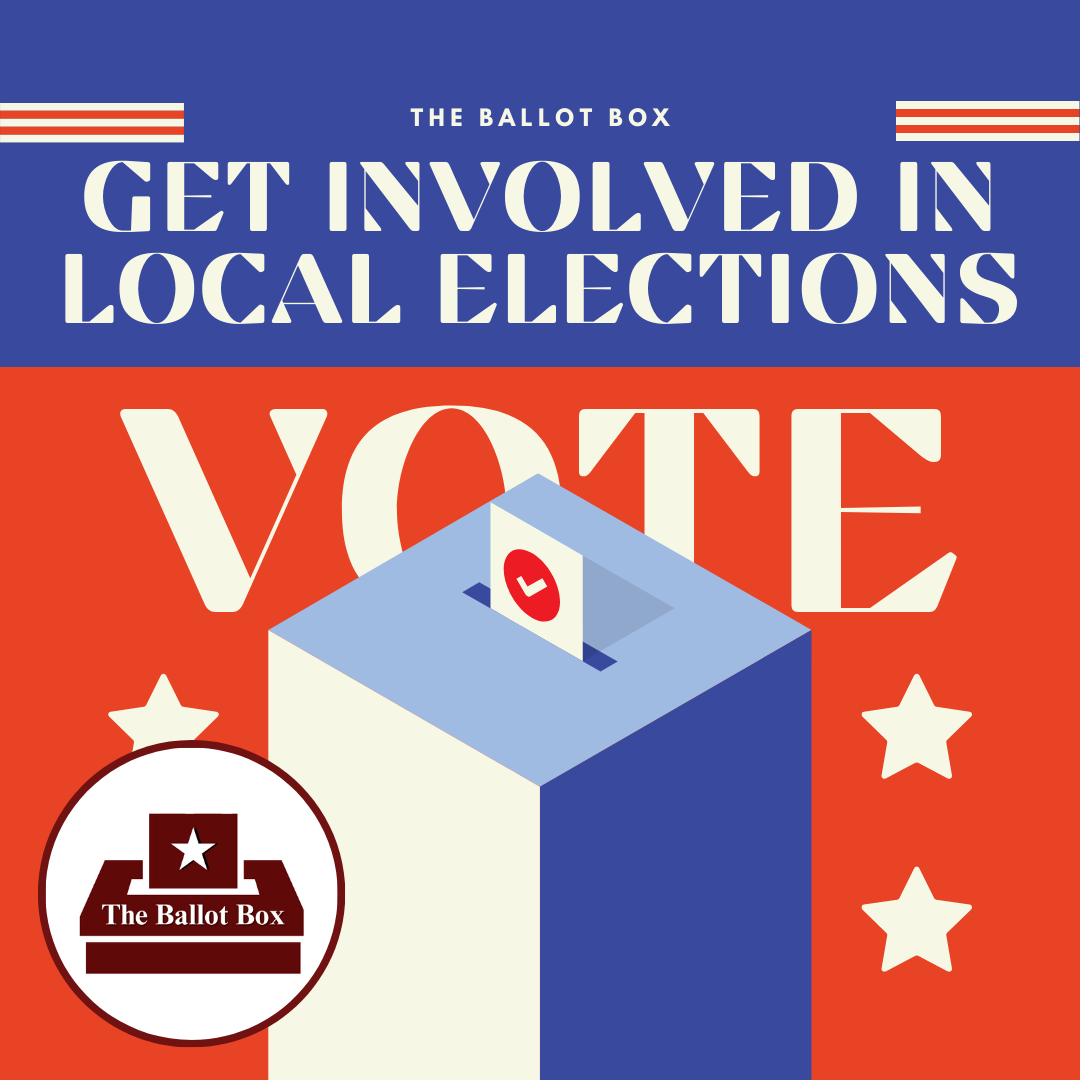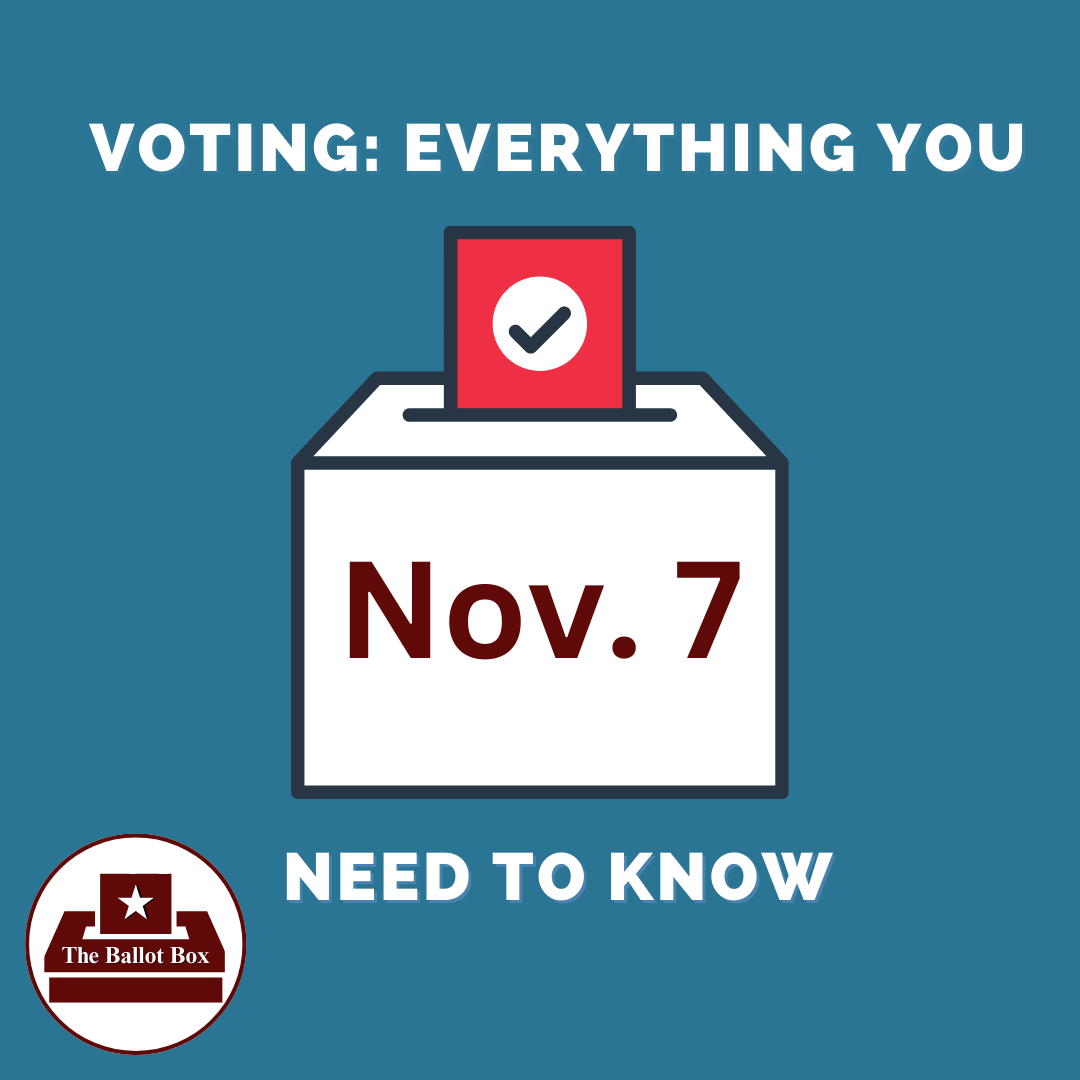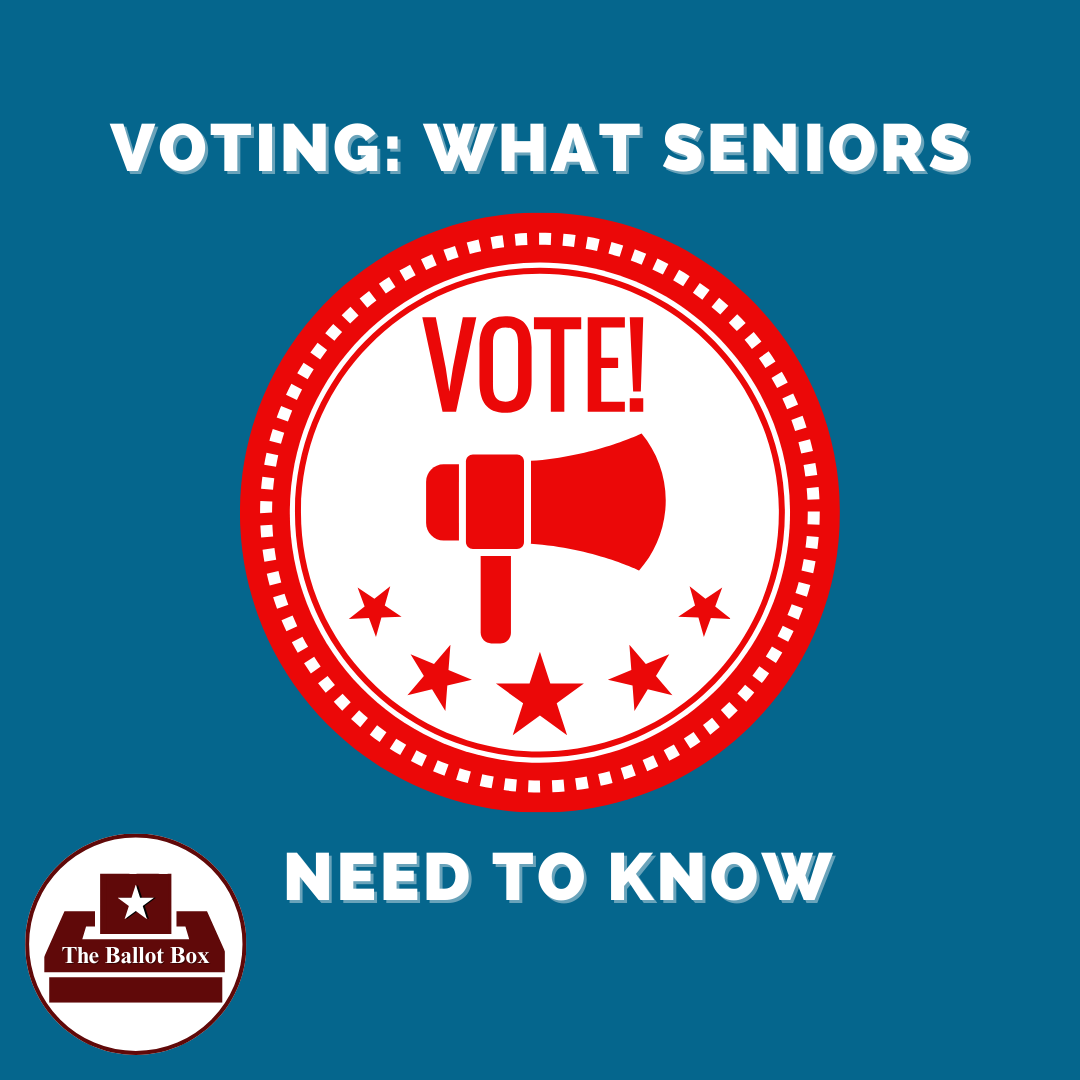Rosanell Eaton spoke as if she wrote the words herself, as if her name was inked alongside the Framing delegates: “We the People of the United States, in Order to form a more perfect Union….”
A passionate and principled young woman, Eaton turned the legal voting age of twenty-one in 1942. She had stepped off a mule wagon and planted her feet on the pavement of the Franklin County courthouse when she was approached by three white officials who told her that she had to recite the Preamble to the Constitution in order to register to vote. Her words, stacked neatly within her memory, radiated the national sentiments of equality but were stained by the scene’s glaring state-sponsored racism.
Eaton’s experience was far from unusual. In the wake of the Reconstruction Era in 1877, White Southern legislators instituted laws that obstructed Black Americans’ rights as citizens. Along with segregation, stigma, and violence, Eaton and other Black citizens were subjected to a series of voting impediments, including literacy tests and poll taxes. Such practices, now known as the Jim Crow laws, were outlawed by the Voting Rights Act of 1965. Drafted to enforce the Fifteenth Amendment’s protection of Black suffrage, the Act “was the most significant statutory change in the relationship between the federal and state governments in the area of voting since the Reconstruction period.”
Section 4 of the Act was written to prohibit voting discrimination across the nation. More specifically, the section identified a coverage formula for specific states and jurisdictions; this system imposed additional limiting provisions on the states’ legislative power. The formula was structured to include all former slave states and any other jurisdiction with restrictive voting tests or devices as of November 1, 1964 and less than 50% turnout for the 1964 presidential election.
North Carolina, where Rosanell Eaton lived, was among the covered states, so it was required to comply with Section 5 of the Act, which mandated the preclearance of voting limits by the Attorney General or a panel of federal judges. Initially set to expire in 1970, the Act’s coverage and special provisions were repeatedly renewed and expanded. In April of 2010, however, Shelby County, Alabama challenged Sections 5 and 4(b) of the Act as unconstitutional. Three years later, Chief Justice Roberts authored the majority opinion of Shelby County v. Holder, in which the Court invalidated the preclearance requirement by a 5-4 ruling. Within days of the decision, previously covered states launched legislation designed to change voting policies.
The legislative decisions made across the nation after the preclearance invalidation marked several changes to our voting system. The emerging policies revealed the intentions and opinions of legislators, along with their power over electoral processes. These factors are still changing and continue to impact how we vote today.
In North Carolina, the Republican response was even faster: email exchanges between Republican lawmakers regarding an omnibus House Bill 589 were fired off within hours of the official Court ruling. No longer restrained by Section 5, the Republicans charged forward with dozens of new provisions, expanding their H.B., called the Voter Information Verification Act, from “16 pages to 57.” The bill introduced a voter ID mandate, eliminated out-of-precinct voting and pre-registration for 16-and 17-year olds, and reduced early voting from 17 to 10 days.
While advocates and outraged citizens castigated the laws as efforts to strip Black voters of their Fifteenth Amendment rights, the Republicans held that their practices were not only within their powers as a sovereign legislature, but also necessary for the prevention of voter fraud and the promotion of citizens’ confidence in the electoral process. H.B. 589 and its opposing perspectives are indicative of the legal and political repercussions of Shelby County; the bill could only become law in a world without the Section 5 preclearance clause.
The Republican defense of H.B. 589 and similarly restrictive voting laws is simple: the U.S. system of federalism upholds the sovereignty of the states and their power to govern electoral processes. So long as a state does not violate federal law, it is free to operate as a laboratory of democracy. Roberts echoes this sentiment in his Shelby County opinion, arguing that “The Federal Government does not… have a general right to review and veto state enactments before they go into effect.”
Roberts also notes that the conditions that justified the preclearance requirement in 1964 have changed enough to render “extraordinary measures” no longer necessary. Although voter suppression continues to plague our country, he explains, “Census Bureau data indicate that African-American voter turnout has come to exceed white voter turnout in five of the six States originally covered by §5.” According to Roberts, the perils of voter discrimination that once demanded legislative action now simply interfere in states’ legitimate interests, including the prevention of voter fraud. As former Republican governor Pat McCrory expressed, “Protecting the integrity of every vote is one of the most important duties I have… And that’s why I signed this common sense legislation [H.B. 589] into law.”.
The “common sense” argument was also made in the language of the bill itself. The General Assembly referred to their bill as “An Act to restore confidence in government.” Based on the assumption that people intentionally impersonate others – dead or alive – at the polls, the legislatures claimed that purging voter rolls and requiring strict identification cleanses the electoral process and encourages voter confidence. Despite minimal evidence of such fraud, the Republican majority, including Rep. David Lewis, maintained that “Just because it’s not documented doesn’t mean it doesn’t exist.” Republicans are quick to argue that compelling evidence is not required for legislation, particularly if that legislation proactively blocks a hypothetical lawbreaker in the future. This line of thinking ignores verifiable evidence of voter discrimination and imposes a solution where there is no problem.
The justifications offered by the bill’s supporters were found reasonable by the Federal District Court Judge Thomas Schroeder after the North Carolina NAACP sued the state the day after the bill was signed.
Judge Diana Motz of the 4th Circuit Court of Appeals came to a diametrically different conclusion. Motz found that “the new provisions [of H.B. 589] target[ed] African Americans with almost surgical precision.” Members of the General Assembly requested and received voter data by race and, using this intelligence, tailored the provisions of the bill to have the maximum impact on Black voters. For instance, the information that Black citizens disproportionately vote early, often with the encouragement of their Church in “Souls to Polls drives,” was utilized when limiting early opportunities and cutting one of the available Sundays. The legislatures’ discriminatory intent, according to Motz, was painfully visible and demanded federal action. Motz’s holding was the opposite of the Republican’s federalism argument, as the Fourteenth and Fifteenth Amendments are limits on states’ power to pass discriminatory laws.
Other opponents of the bill – and the Shelby County decision – took issue with the notion that the current status and treatment of minorities in America fails to justify a federal preclearance requirement. Although the Jim Crow era began almost 150 years ago, the attitudes that animated the period seem to have persisted long past the late 19th century. As North Carolina legislators draft voting bills with staggeringly similar language to those of the late 1870s, voting advocates insist that the ghosts of Jim Crow haunt our country’s democratic processes. The revival of bigoted and bygone years is particularly disturbing for Rosanell Eaton and other victims of both Jim Crow and modern suppression strategies. As Eaton ruefully reflected to her daughter in 2013, “I was hoping I would be dead before I’d have to see all this again.”
Eaton’s dismay at the removal of the preclearance provision, despite the persistence of racism, mirrors the opinions of Justice Ginsburg in her dissent in Shelby County. Ginsburg likened the elimination of Section 5 to “throwing away your umbrella in a rainstorm because you are not getting wet.” The increase of civic engagement among Black citizens is not reason to suspend the preclearance clause, as Justice Roberts suggests, but evidence of the success of the clause. In the 1990s, during the preclearance era, the then Democratic majority in North Carolina passed laws to expand access to voting; these actions elevated North Carolina’s place in national voter turnout “from 43rd… to 11th” with a particular increase “among black voters.” The track record of the VRA, and its preclearance requirement, indicates its effectiveness both then and now. As Ginsberg and others warned, removing this requirement was a premature misstep that welcomed the rainstorm of H.B. 589.
Roberts’s opinion in Shelby County ended the Department of Justice’s legal and remedial function to authorize voting policies, thrusting this responsibility back into the realm of politics. Now, challenges to restrictive practices must be presented in the courts after the law is effective. The shift in authority is more consistent with the language of the Constitution, but ignores the continued presence of racism in America and the demonstrated willingness of legislatures to draft discriminatory laws. Even if a law is successfully struck down, as it was in the 4th Circuit Court of Appeals, there is still ample opportunity for violation. Many Republican-controlled counties, for example, exploited the lack of specificity by the appellate court, “using that opening to carry out the intended cuts of H.B. 589 anyway.”
The status of voting rights in North Carolina following Shelby County serves as an effective case study for understanding its repercussions. These changes are certainly not exclusive to North Carolina; policymakers across the nation have capitalized on the legislative gap created by Shelby County in order to pass discriminatory laws. Shelby County, further, is not the only case in recent history to have inspired a chain reaction of restrictions. In Brnovich v. Democratic National Committee, which was decided on July 2 of 2021, the Court defended two Arizona laws that many considered deliberate attempts at obstructing minority citizens’ ability to vote. The laws, one enforcing the discarding of out-of-precinct votes and the other banning the delivery of another person’s ballot, were challenged by the Democratic National Committee as violations of Section 2 of the VRA. This section, which “prohibits voting practices or procedures that discriminate on the basis of race, color, or [minority] membership,” was severely weakened by the Court’s decision. In her dissent, Justice Kagan reflected that “the Court has (yet again) rewritten – in order to weaken – a statute that stands as a monument to America’s greatness, and protects against its basest impulses.”
Then, in May of 2023, many began bracing themselves for another hit to the VRA. Although the majority opinion author was not yet announced at this time, some speculated that Roberts might write the decision for Allen v. Milligan, a case dealing with Alabama’s congressional redistricting policies. The Republicans’ mapping plan was challenged by advocates and then a panel of three district court judges as an infringement of Section 2. When the case came to the Supreme Court, advocates trembled at the prospect that an apparent “voter rights foe” like Roberts might be the one to pick up the pen. In a surprising turn of events, however, Roberts validated not only the district court judges, but the vitality of Section 2.
The June ruling was echoed on September 26, 2023 when the Supreme Court again rejected Alabama. This time, the Court refused the state’s request to delay the redrawing of a new map with two Black-majority districts.
Many voting advocates celebrated Allen, and the stunning halt to the Court’s gutting of the VRA, as a step in the right direction. In Louisiana, which similarly drew districts to limit the power of Black voters, the Supreme Court allowed for the congressional map to include a second Black-majority district. Other Section 2 lawsuits, like those in Georgia and Arkansas, were also forced to reckon with the precedent set by Allen.
Still, the decision is far from truly bolstering Section 2 protections. While Roberts’ Allen opinion affirmed the existing strength of Section 2, it hardly expanded upon it. The VRA still stands on shaky legs, wounded by Shelby County and Brnovich. Until Congress takes action to mend these gaps in our democratic process, Section 2 – like Section 5 – might crumble. Republican policymakers will continue to launch targeted legislation and wait for something to stick – and, without congressional change, it will.




